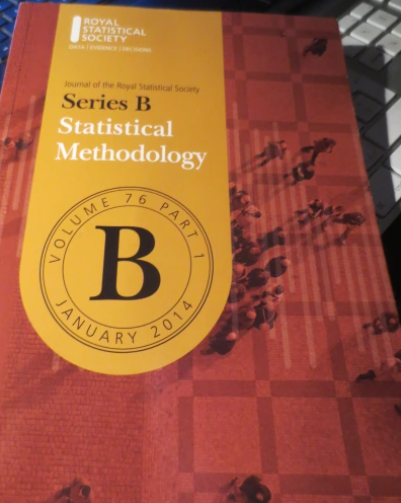通过双臂盗匪过程进行战略双样本检验
IF 3.6
1区 数学
Q1 STATISTICS & PROBABILITY
Journal of the Royal Statistical Society Series B-Statistical Methodology
Pub Date : 2023-06-14
DOI:10.1093/jrsssb/qkad061
引用次数: 0
摘要
本研究旨在通过分析两个总体参数之间的差异是否大于预先指定的正等效裕度来提高双样本检验的有效性。经典检验统计量将原始数据视为可交换的,而本文的检验统计量打破了这种结构,提出采用双臂强盗过程对数据进行策略整合,从而将经典的CLT与大数定律相结合,构建了针对策略的检验统计量。利用非线性极限理论在更大的概率空间中研究了渐近理论,该渐近理论涉及具有明确定义密度函数的“策略CLT”。渐近分布表明,与经典的CLT相比,所提出的统计量在零假设下更集中,在备选假设下更不集中,从而提高了检验能力。仿真研究为理论结果提供了支持证据,并在使用有限样本时描绘了更强大的性能。还添加了一个真实的例子来说明。本文章由计算机程序翻译,如有差异,请以英文原文为准。
Strategic two-sample test via the two-armed bandit process
This study aims to improve the power of two-sample tests by analysing whether the difference between two population parameters is larger than a prespecified positive equivalence margin. The classic test statistic treats the original data as exchangeable, while the proposed test statistic breaks the structure and proposes employing a two-armed bandit process to strategically integrate the data and thus a strategy-specific test statistic is constructed by combining the classic CLT with the law of large numbers. The developed asymptotic theory is investigated by using nonlinear limit theory in a larger probability space and relates to the ‘strategic CLT’ with a clearly defined density function. The asymptotic distribution demonstrates that the proposed statistic is more concentrated under the null hypothesis and less concentrated under the alternative than the classic CLT, thereby enhancing the testing power. Simulation studies provide supporting evidence for the theoretical results and portray a more powerful performance when using finite samples. A real example is also added for illustration.
求助全文
通过发布文献求助,成功后即可免费获取论文全文。
去求助
来源期刊
CiteScore
8.80
自引率
0.00%
发文量
83
审稿时长
>12 weeks
期刊介绍:
Series B (Statistical Methodology) aims to publish high quality papers on the methodological aspects of statistics and data science more broadly. The objective of papers should be to contribute to the understanding of statistical methodology and/or to develop and improve statistical methods; any mathematical theory should be directed towards these aims. The kinds of contribution considered include descriptions of new methods of collecting or analysing data, with the underlying theory, an indication of the scope of application and preferably a real example. Also considered are comparisons, critical evaluations and new applications of existing methods, contributions to probability theory which have a clear practical bearing (including the formulation and analysis of stochastic models), statistical computation or simulation where original methodology is involved and original contributions to the foundations of statistical science. Reviews of methodological techniques are also considered. A paper, even if correct and well presented, is likely to be rejected if it only presents straightforward special cases of previously published work, if it is of mathematical interest only, if it is too long in relation to the importance of the new material that it contains or if it is dominated by computations or simulations of a routine nature.

 求助内容:
求助内容: 应助结果提醒方式:
应助结果提醒方式:


